How to water violets correctly?
Violets are a decoration of any home, these delicate flowers are quite unpretentious to care for and, thanks to a variety of colors, will help create a real garden in the room. But it is very important to know how to water violets correctly, because violation of simple rules can lead to the death of the plant.
Flower features
Violet, or saintpaulia, is a guest from hot Africa, so the plant has the following characteristic features:
- does not tolerate cold;
- drought is the enemy for such flowers;
- over-watering can also kill plants;
- if moisture gets into the middle of the flower, saintpaulia can begin to rot.
What are the signs that you can understand that a violet needs to be watered? There are several of them.
- The substrate in the pot has become light, small cracks have formed on its surface.
- The leaves of the plant wilted and wilted.
Signs of waterlogging are as follows:
- the lower leaves of the plant began to wither, fall off;
- the substrate is moist, dark;
- a large amount of liquid accumulates in the sump.
This information will help growers understand the needs of green pets and water violets correctly.
Varieties of watering
At home, you can use several types of watering:
- straight from below;
- wick;
- pallet;
- immersion method;
- watering with a towel;
- straight from above.
The easiest watering is from below, it is he who is most common among flower growers. It is extremely important that the liquid does not fall on the growth point, therefore it is necessary to use a special watering can with a thin spout without a diffuser or a syringe.
Advice
If the indoor violet has grown and its leaves completely cover the substrate, then it is best to use pallet watering.
Small flowers that are planted in pots less than 10 cm in diameter are easier to wick.
Direct watering
Watering violets by direct watering from below is quite simple, but care must be taken that moisture does not get on the leaves and the outlet.
- Using a watering can or a syringe, water is gently poured into the pot until the pan is full. You should act very carefully, pour water in a thin stream from different sides of the pot in order to prevent soil erosion.
- Next, the plant is left for 20 minutes.
- The rest of the water from the pan is poured.
The method is quite simple if the plant is young and has only a few leaves, but when the violet grows, it becomes difficult to water it. This method is also called trickle irrigation.
Pallet method
Its main advantage is that it helps prevent moisture from entering the plant's leaves. The procedure is as follows:
- pour water into the pan;
- put a flower pot in a tray for 30 minutes - this time will be enough for normal soil moisture;
- drain off remaining water.
This method helps to prevent waterlogging of the plant.
Advice
Moisture should not stagnate on the pallet, so it is very important not to forget to drain it in a timely manner.
Wick method
To water violets in this way, you will need a wick, which you can make yourself - for this, an ordinary cord or a piece of cloth twisted with a bundle is taken. One end is lowered into a deep container of water. The second is inserted into the pot through the drainage hole (this can be done with a wooden stick). Moisture will rise up the wick, irrigating the soil.
Advice
Place the flower pot in such a way that it is above the container of liquid.
When choosing this method of watering indoor violets, it should be remembered that the bottom of the pot should not come into contact with water. Also, experienced flower growers advise not to use the wick in the cold season, since the water for irrigation will quickly become cold, and this is unacceptable for Saintpaulias.
If the plant is very overgrown, wick irrigation will not be able to provide it with the required amount of moisture, so you will have to choose another method, for example, sump irrigation.
Immersion
There is another watering method used by experienced flower growers - the immersion method. How to use it?
- Pick up a container that is larger in diameter than a flower pot.
- Place the pot in this container while empty.
- Pour water at a temperature of 38-40 ° C. The liquid should be about 2/3 of the pot.
- As soon as the topsoil turns dark, the pot must be removed from the container and placed on a pallet so that excess moisture can drain.
The method is quite simple, but care should be taken to ensure that the substrate does not become too wet.
Other methods
There are several other ways to water violets, for example, with a towel. It is also based on the action of the capillary effect.
- You will need a large towel, preferably a waffle or old terry towel.
- One end of it is lowered into a container filled with water.
- The second end is laid out on the table, pots with plants are placed on it.
Through the drainage hole, moisture will flow to the roots of the violets.
Another method that experienced florists use is direct watering from above. It is not so popular, since it must be worked very carefully: a thin stream of water is carefully directed to the edge of the pot, while moisture should not get on the leaves.
Pros and cons of each method
The positive and negative sides of the main ways of watering violets are presented in the form of a table.
| Way | Advantages | disadvantages |
|---|---|---|
| Straight bottom | Helps to get rid of elements harmful to plants that will "leave" the pot along with water residues | There is a great risk of ruining the plant, because water can accidentally get on the leaves or the outlet. |
| Pallet | Violets take this type of watering very well. | Harmful salts will rise to the roots of plants along with moisture |
| Wick | Easy to use, completely safe for flowers in the warm season. Plants themselves regulate the amount of incoming moisture | Cannot be used in winter. If you water flowers in this way, planted in pots more than 8 cm in diameter, the violets will grow large leaves and stop blooming. |
| Direct watering from above | Helps to wash out salts harmful to plants together with excess water | It is very difficult to gently water an overgrown plant with a large number of leaves so that moisture does not get on them. Trace elements useful for flowers are washed out together with water |
| Immersion | Moisture will not get on the leaves | It is required to carefully monitor the process, otherwise there is a risk of waterlogging the substrate |
The table shows that each of the methods used at home has both strengths and weaknesses. Therefore, you can choose one or another of them at will.
Frequency and best time to water
Key rules - you need to water violets regularly, but in moderation, the soil should be slightly moistened. Plant roots require air, so if you overdo it and add a lot of water, they can start to rot.
Advice
It is very simple to determine that the substrate is overly moistened - you need to raise the pot. If it is very heavy, then there is a lot of moisture in it. You can save the plant by transplanting it.
It is best to water the plants at the same time:
- from the second month of spring and summer - early in the morning;
- in winter, autumn and early spring - during the day.
How often should violets be watered? It depends on the season.
- In summer, watering is carried out every day or every other day (depending on the weather and how dry the soil is).
- In winter - 2-3 times a week.
Advice
When watering, the violet should not be in direct sunlight. And in general, these plants should be protected from intense sun exposure.
Water
In order for Saintpaulias to grow beautiful and healthy, it is very important to pay attention to the quality of the water.
Advice
It is best to use soft water that has been previously settled and filtered. Experienced gardeners also recommend melt water from natural sources - it contains a large amount of elements useful for plants. However, melted rain or snow water cannot be used.
The irrigation liquid must be at room temperature, you cannot take tap water:
- it may contain harmful calcium salts and chlorine;
- at low temperatures, the violet cannot grow.
Boiled water is not the best option: the nutrients it contains are destroyed. Although it is more acceptable than tap liquid. White bloom on the soil is a sign that hard water is being used.
Special cases
After transplanting, the violet must also be watered correctly. Florists recommend doing this:
- prepare a pot in advance, the soil in which must be moderately moistened (it is easy to determine: the earth should not stick to your hands);
- the plant that will be transplanted in the morning is watered in advance in the evening;
- after transplanting into a new pot, the flower is not watered, you must wait 1-2 days until the soil surface dries up;
- after that, watering is carried out in the usual way.
Important!
It is impossible to transplant the plant into dry soil, there is a great risk of damaging the roots.
If the plant is accidentally flooded, it can be saved.
- You need to get the violet out of the pot, examine the roots. If they are healthy and not blackened, wrap them in a paper towel and allow them to dry.
- Next, the plant is transplanted into new soil (you can also use the old substrate, after drying it).
- Do not water the flower until the soil layer becomes lighter, that is, it dries out by 2-3 cm.
Advice
Old soil should not be used if it smells like mold.
Secrets of florists
In order for plants to please the eye with rapid flowering, it is important to take into account some of the recommendations of experienced florists.
- The looser the substrate is used, the more frequent watering should be.
- When the violets are in bloom, water them more often and more.
- Young plants actively consume moisture, so watering for them should be more intense than for old ones.
- If the room where the pots are located is dry and many appliances are on, you will need to water the flowers more often.
- The frequency of watering is also influenced by the material from which the pot is made. In clay "dwellings" the earth dries out faster than in plastic.
- Pot drainage will also help to avoid excessive watering: crushed brick, stones, expanded clay.
Watering violets correctly is quite simple, the main thing is to follow the recommendations and be careful not to flood the plants. The rule applies to these indoor flowers - it is better to underfill than overflow.
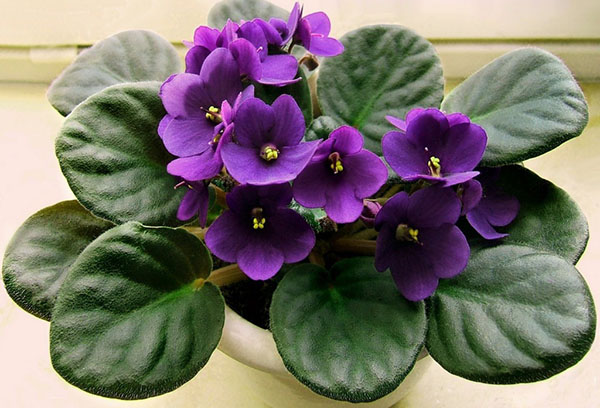
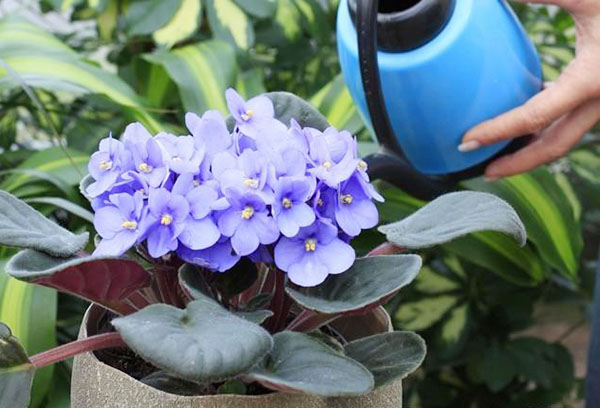
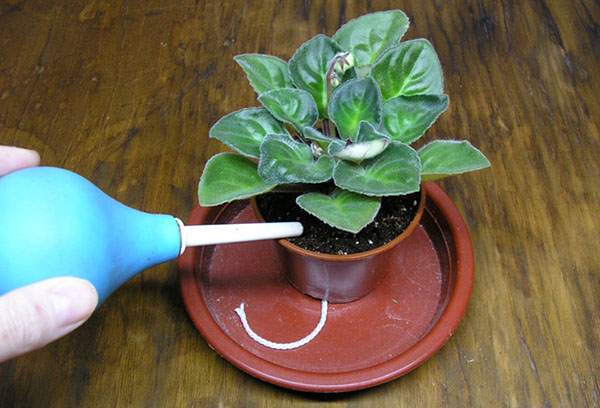
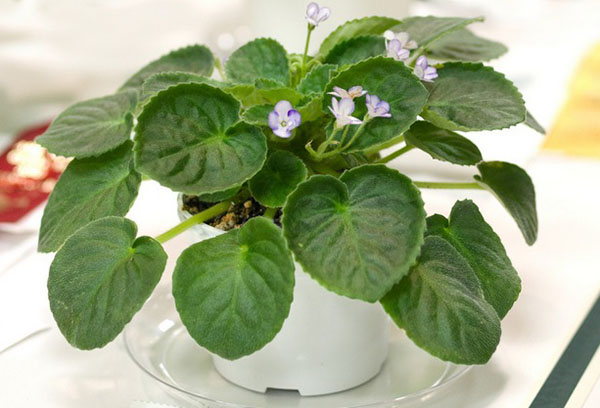
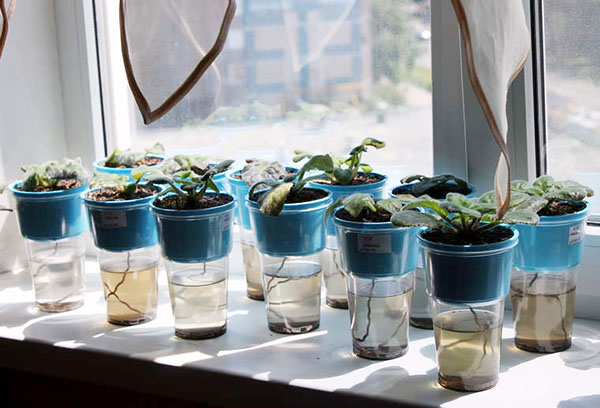
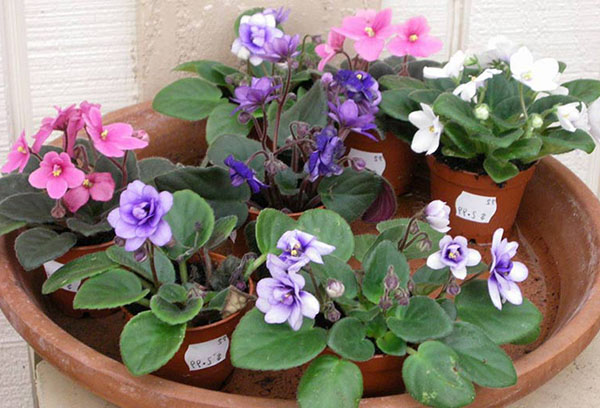
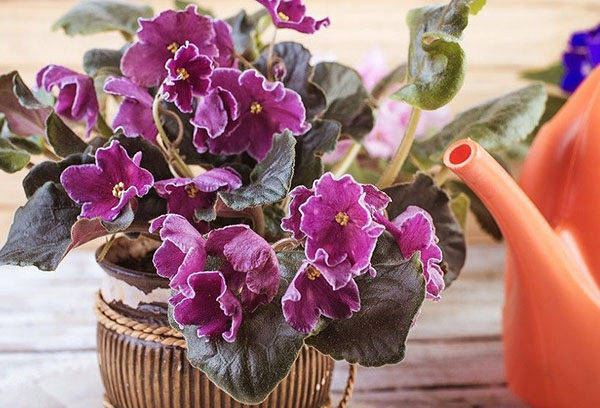
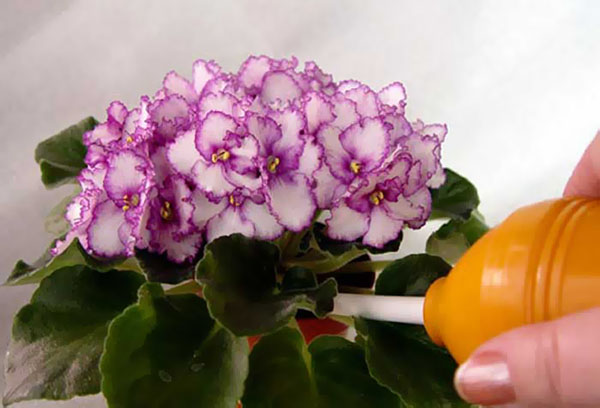
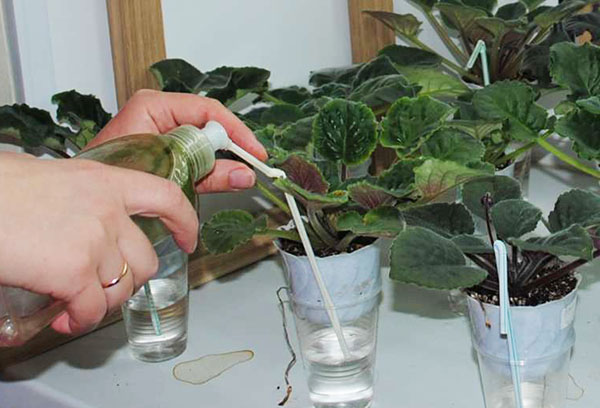
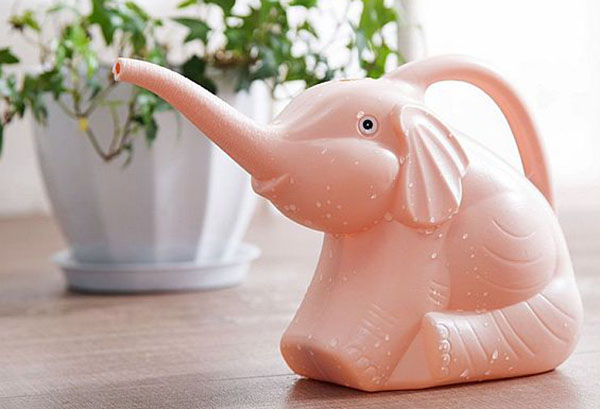
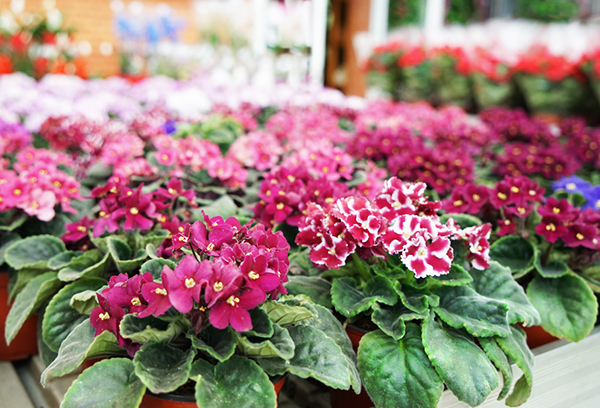
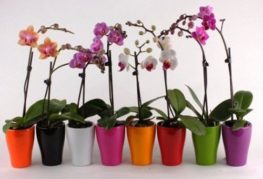
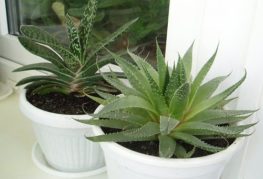
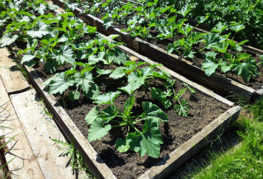
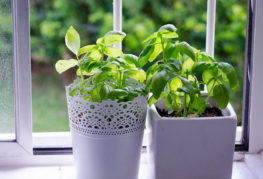
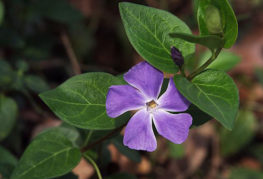

and will be published shortly.